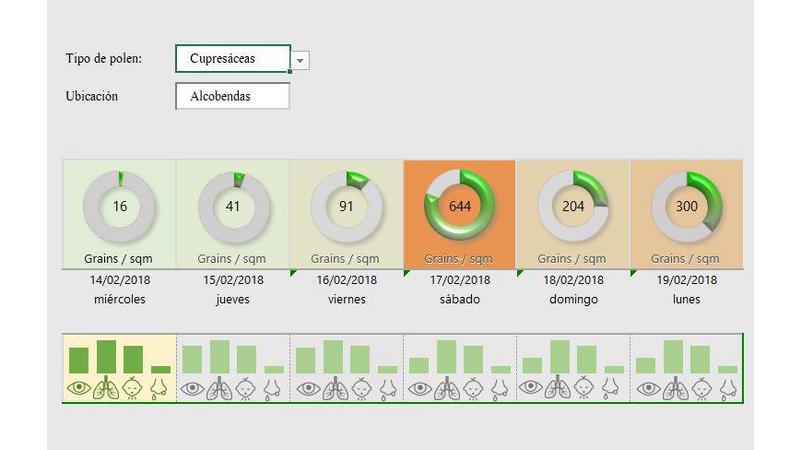Pollen allergies have aggravated over the past few years, however, there’s little information for patients to activate their prevention measures.
In particular, in Spain, pollen information available is either outdated -specific pollen counts from the previous day- or too aggregated -either aggregating at a large e.g. “trees” category, or producing an aggregate figure for the whole of the Madrid region-.
Our project is a forecasting system, providing previsions for the following 5 days on the 5 most common types of pollen affecting the Madrid region, detailed for each observation node. The base of the system is historic data on pollen counts and atmospheric conditions for each observation node in the region (11-12 observation nodes in Madrid).
Moreover, not only pollen count is informed but also the expected degree of “harm” – we call it “virulence”-, which helps patients even further. For instance, on a rainy day- preceded by a day with medium-to-high counts-, the grains found in the atmosphere may result low, because grains “rupture” when they touch water. This rupture spreads allergens into smaller and more harmful particles, affecting patients even further.
For the prediction of virulence, we’ll be considering main factors considered make pollen more harmful, such as pollution particles in the atmosphere, or as mentioned above, rain water.



Comments (139)
t
testing
t
testing
t
testing
t
testing
t
testing
t
testing
t
testing
t
testing
t
testing
t
testing